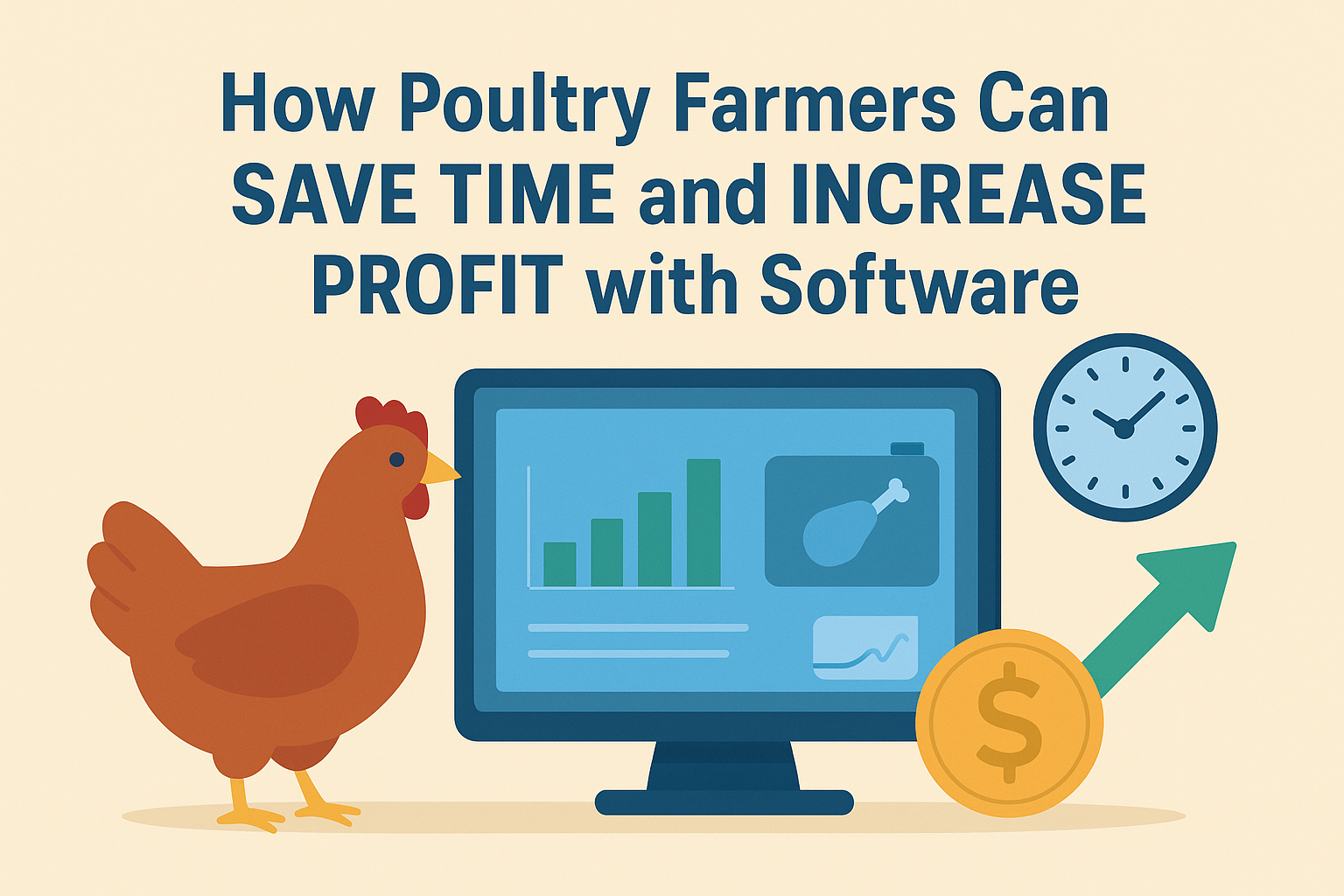The Effects of Light on Egg Production
The length and intensity of the light received by the bird on a daily basis influence Poultry Production Lighting. Light stimulates the anterior lobe of the pituitary gland via the optic nerve, causing FSH and LH to be released. Light energy also enters the cranium, skin, and feathers. FSH promotes the development of ovarian follicles. The ovum is liberated by the action of LH when it reaches maturity.
Important light-related points
- Wavelengths ranging from 400 to 700 millimicrons (nanometers) ®Visible to the naked eye
- Longer wavelengths (Red) of visible light can reach the brain more effectively than shorter wavelengths.
The strength of the sun's light beams changed depending on
- The sun's position.
- Cloudiness
- Airborne dust and moisture
The length of the day ® fluctuates owing to the earth's relative location to the sun. In the Northern Hemisphere, June 21st is the longest day of the year, while December 21st is the shortest day of the year (In the southern hemisphere it is reversed)
Due to the curvature of the earth's surface, daylight begins 15 to 30 minutes before dawn and darkness occur 15 to 30 minutes after sunset, and hence the duration of the light day is slightly longer than the hours between sunrise and sunset. However, the time between dawn and sunset is commonly referred to as the "bright day."
Terms associated with lighting
Candela (Candle)
A candela is a measure of the luminous intensity of a light source in a certain direction.
Lumen
The lumen is defined as the rate at which light falls on a one-square-foot-area surface one foot distant from a one-candela-intensity source.
Foot-candle
The intensity of illumination on a surface is measured in foot candles. A foot-candle is defined as the intensity of light striking each and every point on the inside surface of an imagined one-foot radius sphere with a one candlepower source in the center. As a result, a foot-candle equals one lumen per square foot.
Light Sources
- The four most prevalent forms of lighting used in poultry houses are,
- Incandescent — The least expensive; requires reflectors and has a limited bulb life (750-1000 hrs)
- Fluorescent bulbs are 3 to 4 times more efficient than incandescent lamps and have a 10 times longer life span.
- Mercury vapor has a long life (24,400 hours), but it takes several minutes to warm up and cannot be used in homes with low ceilings.
- Compact Fluorescent (CF) Lighting — Saves energy.
- To deliver the same light intensity, one-fifth the energy of fluorescent light is required (lumen)
Light control
- The way lights are put in the chicken house affects their performance. The following are some critical considerations to remember while replacing bulbs in chicken houses:
- The space between bulbs should be 1½ times the distance between the bulbs and the bird's level.
- The gap between bulbs and the house's outside margins should be only 12 the distance between lights.
- The bulbs in a cage system should be positioned such that their rays fall on the meal and the birds.
- When compared to no reflector, clean reflectors boost light intensity at bird level by 50%.
- Avoid cone-shaped reflectors because they confine light beams to a small region.
- It is preferable to utilize a flat reflector with a rounded edge.
- In the event of a deep litter system, the bulb should be put at a height of 7-8', however in a cage house, it should be kept in the aisle.
- In open houses, avoid hanging lights with a cord.
- Very unclean bulbs emit around one-third less light than clean bulbs.
- Once every two weeks, light bulbs should be cleaned.
Effects of light throughout the growth period
- Reducing the length of the light day during the growing season will result in
- Increase the age at which sexual maturity occurs.
- Increase the size of the first eggs that hatch.
- Light limitation alone can delay sexual maturity by up to 3 weeks.
- We can postpone up to 4 weeks if we combine meal restriction with light restriction.
- Increase the number of eggs laid in the initial part of the egg cycle (but not in the total number of eggs laid)
Effects of light during the laying period
Due to the release of FSH and LH from the pituitary gland, birds bred in higher day-light generate more eggs. The brightness of the light also has an effect on egg production. In layer dwellings, 1 ft candlelight intensity is required under realistic situations. A minimum of 0.5 foot-candle light intensity is required at the bottom deck of a multi-duck cage system. During the peak egg production period, 16 hours of light is required for optimal egg production. Reducing photoperiod during the laying period has a significant impact on egg production.
Combination light-growing programs
There are two critical factors to consider when it comes to lighting:
For developing pullets, the length of the light day should never be increased.
For laying pullets, the length of the light day should never be reduced.
Flocks in season
In-season flocks are birds that are born while the length of the natural light day is shortening, at least in the latter portion of their life cycle.
In-season flocks are defined as chicks that hatch in the Northern Hemisphere between March 1st and August 31st.
Artificial light can be provided in the morning, evening, or both morning and evening.
Combination light-growing programs
There are two critical factors to consider when it comes to lighting for developing pullets, the length of the light day should never be increased. For laying pullets, the length of the light day should never be reduced.
Flocks in season
In-season flocks are birds that are born while the duration of the natural light day is decreasing, at least during the latter part of their growth cycle.
In general, chicks hatched in the Northern Hemisphere between March 1st and August 31st are known as in-season flocks.
Flocks in the off-season
Out-season flocks are chicks that hatch between September 1st and February 28th and grow throughout the rising light day.
a) In-season flock
Light program growth and laying instructions in open-sided buildings a) Up until 20 weeks, no artificial light is required (in the case of meat-type breeders 22 weeks). Increase the light to 13 hours at 20 weeks of age. Then add one hour every week until it reaches 16 hours of light.
b) Out-of-season flocking
There are two options.
i)Constant light-day schedule
Calculate the length of the longest natural light day before the pullets reach the age of 20 weeks. Maintain this duration of daily light hours from the third day until 20 weeks by alternating between artificial and natural The length and intensity of the light received by the bird on a daily basis influence Poultry Production Lighting. Then, at this stage, increase 1 hour of light every week until it reaches 16 hours total light time.
ii) Daylight Savings Time Program
Determine the total number of natural daylight hours when the pullets are 20 weeks old. Then multiply by 7 hours. This is the duration of the light day beginning on the third day. After that, cut the length of the light day by 20 minutes every week. Increase the length of the light day by one hour at 20 weeks of age. Then raise it by one hour every week until it reaches 16 hours of light per day.
Photo-refractoriness
Photo-refractoriness describes a condition in which a bird is unable to respond to long day lengths. The longer the stimulating day, the sooner and more dramatically egg production declines due to photo-refractoriness.
Programs for ephemeral lighting
Ahemeral lighting cycles occur when the overall time of light and dark does not equal 24 hours. There are two types: longer days (14 hours of light + 14 hours of darkness) and shorter days (11 hours of light + 11 hours of darkness). A longer day cycle improves eggshell quality, but a shorter day cycle increases egg production by 2%. These cycles, however, are incompatible with typical working hours and need the usage of light-proof buildings.





